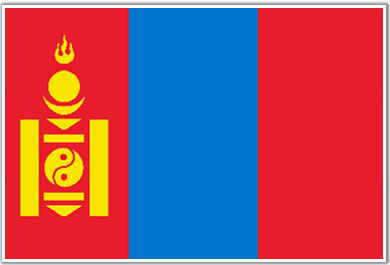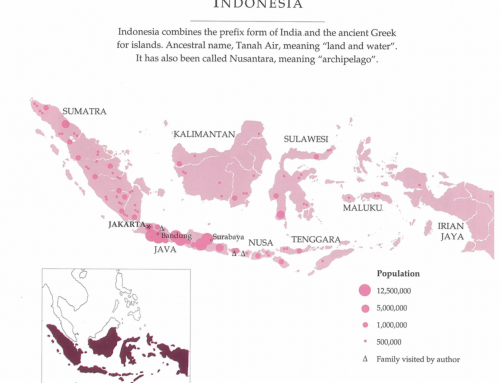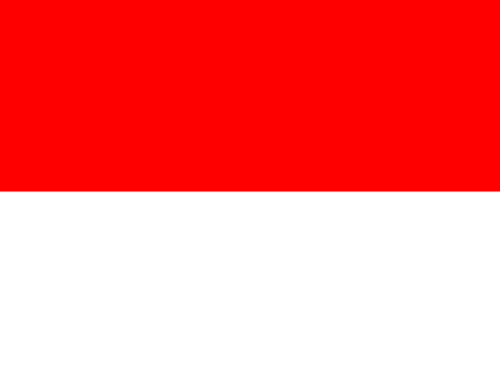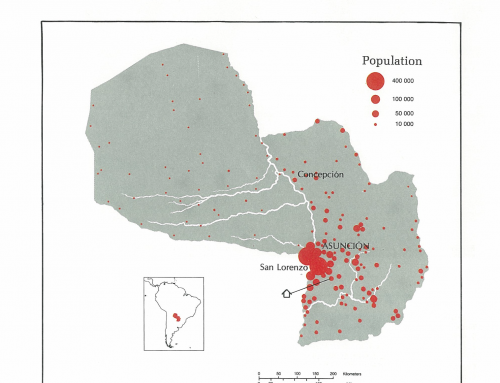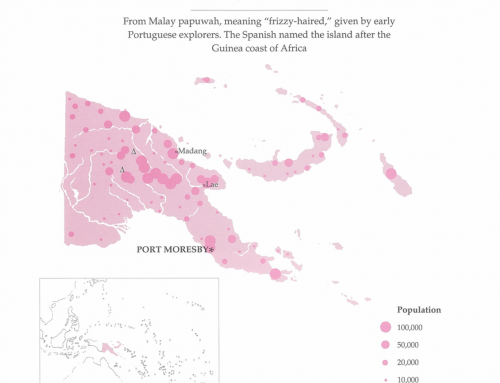GEOGRAPHY
Three major topographic zones: in the north and west, fingerlike mountain ridges; to the east, vast hilly steppe plains; and in the south, the Gobi plateau of grasslands and desert. Max. altitude: 4,374 m. (14,351 ft.) (Tavan Bogdo)
Area: 1,565,000 sq. km. (604,250 sq. mi.)
Density: 1.2 pers./sq. km (3.1 pers ./sq.mi.) (1986) (lowest density in the world)
Arable land: 0.8% (1985) (83% of the land is steppe and suitable for grazing)
Forest: 9%
Climate: Characterized by extreme variations in temperature and very low precipitation. Winters cold and sunny; summers short, with sudden downpours. The center of the world’s maximum atmospheric pressure, it has an average of 230 to 260 clear sunny days a year.
History
Inhabited since Lower Paleolithic times (between 100,000 and 500,000 years aga).
200s B.C.: The Huns emerge as the first powerful united tribe among many pastoral nomadic peoples.
552-840 A.D.: Turk and Uighur empires rule Mongolia.
1204: Chinggis (Genghis) Khan conquers the major tribes of Mongolia to create a powerful confederation which goes on to invade great areas of Asia and Europe.
1279: Qubilai (Kublai), grandson of Chinggis, establishes the Yuan Dynasty after conquering China.
1368: Yuan Dynasty falls, and Mongol power begins to decline.
1500s: Lama Buddhism, introduced to Mongolia from Tibet, begins to flourish.
1600s: Internal strife leaves Mongolia vulnerable to the Manchus, leaders of China’s Qing (Ch’ing) Dynasty.
1700s: Manchus integrate lnner Mongolia with China, and dominate
Outer Mongolia. Russia controls Buryat-Mongolia (in Siberia).
1911: Mongolia shifts to the Russian orbit until the 1917 Revolution, when it reverts to Chinese.
1921: Mongolia, with the help of Russian troops, drives the Chinese out of Outer Mongolia.
Nov. 4,1924: Proclamation of the Mongolian People’s Republic in Outer Mongolia. Inner Mongolia remains part of China. All foreign contacts except with the USSR are terminated .
1929-32: An unprepared programme of collectivisation ruins the country’s economy and stock of cattle falls by at least a third. A rigorous antireligious campaign turns many people against the Mongolian People’s Revolutionary Party.
1932: Uprisings break out across the country, resulting in intervention by the Soviet army.
1936: Marshal Choybalsan becomes effective dictator of Mongolia.
1945: A plebiscite confirms Mongolia’ s wish to remain independent. The country’s international position of isolation and unique dependence on the USSR does not change until the communication of Europe and the success of the communists in China opens a wider field of diplomatic activity.
1946: The traditional Mongolian alphabet is abandoned in favour of a form of Cyrillic script.
1962: Mongols celebrate the BOOth anniversary of the birth of Genghis Khan.
1986: Mikhail Gorbachev offers to withdraw some Soviet troops from Mongolia as a step towards normalising relations between Moscow and Beijing.
1989-90: Newly formed opposition parties organise peaceful demonstrations in Ulan Bator, demanding political and economic reforms.
1990: Punsalmaagiyn Ochirbat becomes the country’s first elected President.
January 1992: A new constitution is adopted, the country’s name is changed from the Mongolian People’s Republic to Mongolia, and the Communist gold star is removed from the national flag.
CAPITAL:
Ulan Bator, pop. 575,000 (1991)

